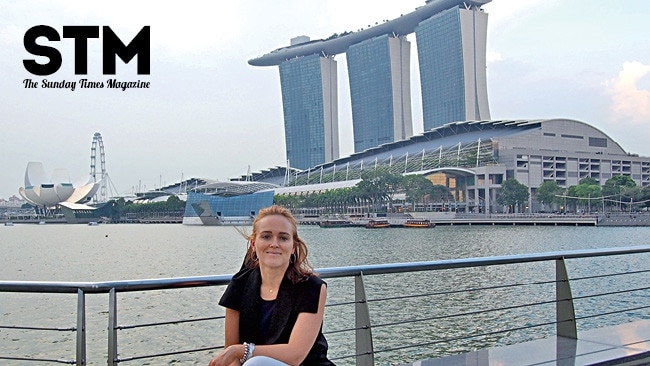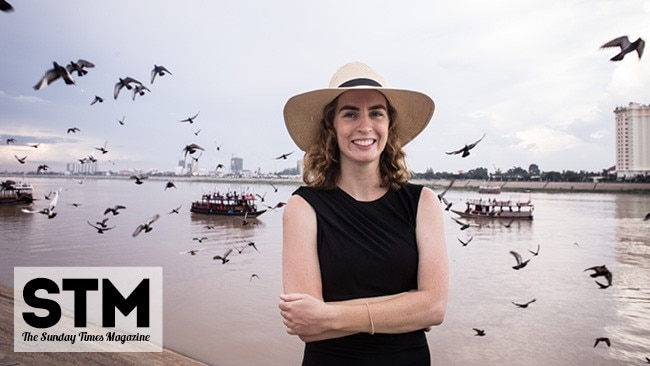Haggle in colourful company
PHILIP Hammond discovers a colourful and exotic affair at the end of a potholed mountain road in North Vietnam.

EVERY Sunday they begin to arrive, on weedy Asian ponies, balanced with their wares and families on overloaded mopeds, or on foot, having walked for hours from remote hillside villages inaccessible to motor transport.
Hundreds of the "Flower Muong" people, farmers for the most part, dressed in their best for the weekly Bac Ha market, make it an exotic affair at the end of a potholed mountain road in North Vietnam.
Vietnam boasts 54 ethnic nations, and near the Chinese border, more than 914,000 "minority" people of the Viet-Muong group dominate.
The Bac Ha market is one district's focus for attracting tourist dollars and although visitors may find themselves suddenly surrounded by wiry little women selling armsful of hand-embroidered bags, or hand-beaten silver earrings and bracelets, most of the Flower Muong traders pay scant attention to camera-wielding outsiders.
And this certainly is a place where taking photographs is irresistible.
The sight of a stiff, dried leopard skin, on sale near a pile of roughly carved wooden horse saddles, was truly shocking. A guide book had mentioned Vietnam's snow leopards were extremely rare, possibly still surviving around this wonderful nation's highest peak of 3143 metres, Mt Fansipan.
But Bac Ha is several hours' drive from Fansipan, which is closer to the rival tourist town of Sa Pa. At Sa Pa, the locals invariably base their traditional outfits on indigo-dyed cloth. Their leggings, dresses, trousers, coats and even hats, are a uniform dark purple-blue, brightened with intricate embroidery, and silver decorations on colourful bibs. By contrast, at Bac Ha, the women contrast plain black with vivid colours and closely embroidered fabrics which often have an overall pink hue.
Market day becomes visually fantastic. Squealing piglets can be seen dragged protesting through the mud. One woman had four furry puppies for sale. An old fellow sat on the ground, playing a strange sounding tune on a multi-stemmed bamboo flute. A hair cutter worked in the open, on a customer seated on a low stool.
Here were sacks of tobacco, stalls serving herbal tea, arrays of roughly made saddle girths and homemade machetes, purple plastic wellington boots, baskets full of fresh herbs and vendors heating duck eggs over gentle flames.
But dominating the scene were the women in their hand-embroidered finery, with tunics, layered skirts, headdresses and accessories vivid in their detailed colouring.
With their high cheekbones, jet-black hair and nut-brown faces, these people could have passed unnoticed in any high altitude scene in the Himalayas or the Andes mountains.
Here also were men in Santa Claus-like red caps and women in almost fluorescent headscarves that are tartan-patterned.
We had travelled to this wonderland from Hanoi, marvelling at the way our taxi driver negotiated the swarms of motorcyclists, many of them riding on the wrong side of the road, until he was obliged to stop in a traffic grid near the railway station.
We lugged our baggage across dark railway lines, up between trains where squatting vendors offered cold drinks on ice, newspapers and cobs of delicious French bread.
Our sleeper was favourably comparable with one on the Sunlander and here we cheerfully settled with our plastic cups, duty-free gin and newly purchased tonic waters.
There's a stainless-steel toilet at one end of each sleeper carriage and one without a pedestal at the other, and they're clean. A woman patrols the corridors, selling hot tea and coffee.
By dawn, the view was of a muddy Red River in flood, rich greenery, glimpses of houses and stands of bamboo. It's a $US48 ($62) return overnight trip to the old 19th-century hill station of Lao Cai. This is a short drive from the border. A bridge over the river links China and it's as if the two sides were competing. Vietnam could boast the highest building.
There's bitumen on the road to Sa Pa and our mini bus, which had been pre-ordered and waiting at the railway station, laboured up the misty valleys, with their suspended footbridges over raging torrents, and rice paddy terraces.
Sa Pa is in a beautiful setting, with some buildings quite European looking in an Alpine kind of way. It has narrow steep streets and caters for tourists to the extent of offering pizza in certain restaurants. The town is a base for hikes into the hills but for the less energetic, it is a stroll from the hotel to the indoor market, packed with very tempting wares unseen in tourist traps elsewhere.
We momentarily worry that we'll be over our weight limits on the flight home, then throw ourselves into another highly enjoyable spending splurge – buying beautifully embroidered fabrics from which to make fabulous cushions, hand-carved soapstone chessmen and other figurines.



